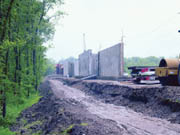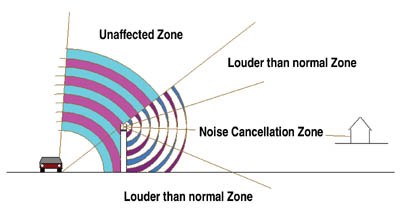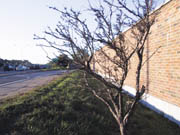
This summer, my 15-year old son spied a 1960 Corvair for sale at a local church yard sale. Thinking that a project car might be a good way for him to learn about cars and have a nice toy when he got his license, we stopped in to take a look. Close inspection, however, revealed that the floorboards were completely rusted out and the upholstery was a mess due to the thing having sat in a field for the last 20 years with a windshield leak. The only thing humming in the engine compartment was a couple of wasp nests. I wouldn't take this one if you paid me.
What really amazed me though was the crowd that gathered around us to talk about how neat the car was and that it looked like "you just need to put a battery in it and it'll take right off." These were church members standing on church ground, so I knew they weren't lying; or they didn't think they were. These people wanted so badly to believe that they could raise a lot of money selling this car that their minds refused to perceive what was really there. The human mind is a strange thing.

Less than Joshua
Another place I see people fooling themselves is behind walls; demising walls built to separate condominiums and sound barrier walls erected to protect homes from traffic noise. In many cases, the wall isn't really there-acoustically, that is.Noise barrier walls are very popular with state and federal departments of transportation to appease communities where highways are being expanded for increased traffic flow. Typically, traffic volume is expected to increase by 40 percent in the next 20 years, with an accompanying increase in traffic noise and other pollution. Despite their popularity, it is well known in the acoustics community that the noise isolation capabilities of these noise barriers are limited to a very short distance behind the wall.
Even though these roadside behemoths cost taxpayers an average of $1 million per mile, the only thing they effectively shield against is a view of the horizon. As an example, Ken Campbell, Ph.D., reported in the November 2000 issue of The Wall Journal that measurements behind a 22-foot-high sound wall show a 10-decibel reduction in noise within 10 feet of the barrier. However, measurements at 160 feet behind the barrier show only a 2-decibel reduction in noise level. Shorter and less massive walls perform worse yet.
Despite their ineffectiveness, roadside noise barriers aren't going away anytime soon. It seems that everyone is convinced that they work. Putting up $100 million worth of noise barriers every year is much less expensive than regulating the noise emissions of 225 million cars, trucks and motorcycles, and resurfacing the 160 thousand miles of national highway system with quieter pavements. Therefore, the departments of transportation are highly motivated to believe that noise barriers work.
The noise barrier industry itself clearly understands the limitations of its products but is building the best walls possible while remaining competitive. Since there are only memories of the noise without the wall to compare with the noise heard now with the wall in place, the obstruction of view (see no evil, hear no evil) along with the obvious reduction in noise immediately behind the barrier is usually enough to convince community members that the wall is cutting down the noise level everywhere behind the wall.
Walls of confusion
Demising walls separating condominiums are also frequently "not there." It is difficult enough to design and build a demising wall that has no hidden sound leaks (e.g. construction gaps, plumbing and electrical penetrations, acoustical short circuits) for sound to go through it. It is even more difficult to design the condominium so that noise cannot easily jump over or around the demising wall.The noise isolation capabilities of walls are measured by the sound transmission class value. Uniform Building Code requires design ratings of STC 50 between Group R occupancies. Architects fool themselves into thinking that if they copy a standard STC 50 sound wall construction out of a textbook for condominium demising walls, that the problem is solved and everyone will be happy. What they fail to take into account is that the walls in the textbook were built and tested in a laboratory by highly trained and highly paid engineers. They are not likely to achieve the same high ratings unless they hire engineers to build their condos in a laboratory.
If they are even aware of the requirement for noise isolation, construction managers fool themselves into believing that they can stuff fiberglass insulation in all the plumbing and electrical penetrations, and still have good sound isolation between living spaces.
But even if that STC 50 wall is painstakingly built and passes the acoustics consultant's inspection, it may still not provide its rated 50 decibels of noise reduction.
If it is easier for noise to go around or over a wall, then that is what it will do. When testing a wall in a laboratory, it is made certain that the easiest path for noise to travel from one side to the other is through that wall. But in a real condominium, it may be easier for noise to go through the ceiling, over the wall and down through the adjacent condo's ceiling. This is a problem when roof truss work prevents the demising wall from being continuous.
Noise has an easier path over roadside noise barriers than through them (usually). Due to a principal that we all learned in high school physics but quickly forgot after the test (Huygen's principal), sound waves spill over the top and sides of the noise barrier. Like a boulder in the middle of a stream, the wall creates a small space behind it where the noise is calm. But downstream, just the distance equal to the width of the wall, the noise spilling over the wall quickly builds back up to its original force.
While the solution to the demising wall problem is simply (relatively speaking) to make sure that all of the noise paths are equally as difficult for the noise to traverse, the solution to the traffic noise barrier has its limits. Typically, a wall will yield a 5 to 10 decibel reduction in noise at close range and next to nothing at farther distances. To make it more difficult for noise to go over the top of the wall, one must make the wall taller but this quickly becomes a losing race toward the sky. It is generally agreed that the practical limit on noise isolation for a freestanding wall is about 15 decibels.

The wall was half there?
One of the projects I'm currently working on is the design of a noise barrier wall (patent pending) that uses passive noise cancellation to increase its noise isolation. Readers may be familiar with active noise cancellation, which is used to quiet the cockpits of aircraft and expensive automobiles.In ANC, the noise entering the cockpit is picked up by a microphone. A microprocessor takes the noise signal and calculates the negative of it, which is then played back into the cockpit through a loudspeaker. Whenever the noise signal has a positive pressure (say +3 pressure units) the signal from the loudspeaker has an equal and opposite pressure (e.g. -3 pressure units) and the two noises tend to cancel each other out (+3 plus -3 equals 0 pressure units). As with being on the ocean, its analogous to standing on the deck of a rolling ship, constantly adjusting one's stance to keep the upper body calm and upright.
In PNC, the noise is split into two parts. By opening up a gap, just below the top of the wall, some of the noise is allowed to go through the gap while the rest of it must still go over the top of the wall. The two halves of the noise signal meet again behind the wall; however, since the half that went over the wall had to travel farther, it is a slightly older version of the noise. With proper design, this older version of the noise is also an approximate negative to the noise proceeding out of the gap.
Figure 1 shows how the signals recombine and tend to cancel but only in certain directions. In other directions the signals add, creating louder noise than normal. The design is also limited to blocking narrowband noise whose source is a set distance from the wall. Even with these limitations, the new wall does have applications for roadside noise barriers where tire/road noise is the main source.
I don't usually advocate poking holes in perfectly good walls but this is one special case where leaving out part of the wall can block more noise.


Report Abusive Comment